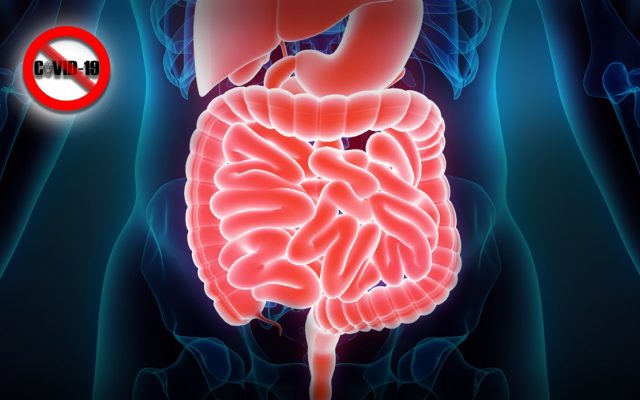HIPEC, PIPAC PROVIDE RAY OF HOPE FOR COLORECTAL CANCER PATIENTS

KUALA LUMPUR (Bernama) – Colorectal cancer (CRC), which develops either in the colon or rectum, is the second most common type of cancer in Malaysia.
According to Globocan (Global Cancer Observatory) – an interactive web-based platform presenting global cancer statistics – a total of 6,597 new CRC cases were recorded in Malaysia last year.
As for mortalities, 2,035 and 1,385 deaths were reported last year due to cancer in the colon and rectum respectively.
CRC is hard to detect in the early stage as the symptoms can be quite non-specific and may include a persistent change in bowel habits and a change in the consistency of the stools. The consistency may vary from loose stools to hard stools to alternating between the two. Some may notice blood or mucus in the stools while others may experience abdominal discomfort or pain.
Fortunately, in recent years, treatments for CRC have seen significant advancements and these include Hyperthermic Intraperitoneal Chemotherapy (HIPEC) and Pressurised Intraperitoneal Aerosol Chemotherapy (PIPAC).
WHAT IS HIPEC?
Consultant general and colorectal surgeon at Mahkota Medical Centre (MMC) in Melaka Dr Ang Chin Wee said HIPEC, also known as hot chemotherapy, is a treatment where chemotherapy drugs are heated and infused into the abdomen.
“HIPEC is a type of hyperthermic chemotherapy used in combination with surgery in the treatment of advanced abdominal and pelvic cancers that have spread specifically to the lining of the abdomen, called the peritoneum.
“During this treatment, warmed anti-cancer chemotherapy (drugs) will be infused and circulated in the abdominal cavity for 30 to 90 minutes, depending on the cancer type,” he explained.
According to Dr Ang, this treatment reduces the severity of the side effects associated with chemotherapy and improves the survival rate of patients. This is because it minimises the body’s exposure to chemotherapy as the drugs are only circulated in the abdomen.
HIPEC is for Stage 4 cancers that have spread to the peritoneum, he said, adding that it is also suitable for cancers that originate from other cancers such as gastric cancer and ovarian cancer, or those originating primarily from the peritoneum such as mesothelioma.
Comparing HIPEC with conventional chemotherapy, Dr Ang said the latter, which is administered intravenously, is known to have poor efficacy in the case of peritoneal cancers.
However, HIPEC allows the heated chemotherapy drugs to come into direct contact with the cancer cells.
“The better penetration into the cancer cells has a superior effect in killing cancer cells,” he said, pointing out that the continuous direct wash of chemotherapy in the abdominal cavity also increases the distribution and penetration into residual cancer cells.
He said to determine whether a patient will benefit from HIPEC treatment, a computed tomography (CT) scan is done and, occasionally, a key-hole surgery or laparoscopy is performed to assess the extent of the peritoneal disease.
“On the day of the HIPEC procedure, the surgeon will first remove most, if not all, the visible tumours in the patient’s abdominal cavity and the peritoneum using cytoreductive surgery or CRS.
“Then, specific chemotherapy (drugs) targeted at the cancer type will be heated by a special machine before infusing and circulating them into the abdomen continuously for 30 to 90 minutes,” he explained.
PIPAC, A NEW TREATMENT
PIPAC, on the other hand, is new and considered as palliative treatment.
During this treatment, the chemotherapy drugs are administered in the form of a pressurised aerosol or sprayed into the abdominal cavity.
“Similar to HIPEC, PIPAC is also specifically indicated for peritoneal cancers. For patients who are not suitable for HIPEC (for example, the patient is unfit to undergo a major operation), then PIPAC would be considered,” he said, adding that PIPAC is considered as a palliative treatment that helps to control peritoneal disease and reduces symptoms due to abdominal fluid accumulation, pain or bowel obstruction.
“In rare circumstances, PIPAC has also been used as a down-staging procedure which is a procedure to shrink the tumour size and volume before performing CRS and HIPEC later.”
PIPAC is performed via laparoscopy – a minimally invasive surgical procedure.
“During the operation, the surgeon would make several small incisions and insert key-hole ports into the abdomen. Carbon dioxide gas is used to distend the abdominal cavity like a balloon so that a small camera can be inserted via the port to visualise and assess the peritoneal tumours and abdominal contents.
“Then, specific chemotherapy (drugs) targeted at the cancer type will be turned into a gaseous form by a special machine before infusing and circulating it in the abdomen continuously for 30 minutes,” he said.
Meanwhile, in Malaysia, there is a lack of awareness regarding HIPEC and PIPAC, resulting in not many patients opting for these treatments.
Dr Ang said although these treatments are fairly new and uncommon in Malaysia, HIPEC has been in clinical practice for over 20 years in many countries.
“The effectiveness of HIPEC will depend on the cancer type and the extent of the disease. Generally, HIPEC is combined with CRS to aim at a cure.
“As for PIPAC, it is safe and most patients tolerate it well too. It has fewer side effects than regular systemic, conventional chemotherapy. Chemotherapy in aerosolised form has been shown to provide superior distribution and penetration into cancer cells and, therefore, has a superior effect in killing cancer cells,” he added.
— BERNAMA


